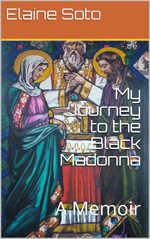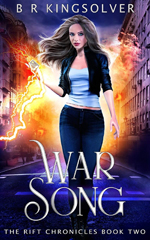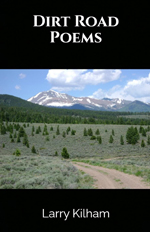Robert D. Kidera is a retired teacher turned award-winning author of the Gabe McKenna mystery series. A LONG TIME TO DIE (May 2021), released through Black Range Publishing, is the fifth and final book in that series. Bob is a member of SouthWest Writers, Sisters in Crime, Rocky Mountain Fiction Writers, and International Thriller Writers. You’ll find him on his website RobertKideraBooks.com and on Facebook. Read more about Bob and the Gabe McKenna series in his 2015, 2017, and 2019 interviews.
 What would you like readers to know about the story you tell in A LONG TIME TO DIE?
What would you like readers to know about the story you tell in A LONG TIME TO DIE?
A LONG TIME TO DIE is the culminating novel in the Gabe McKenna Series. It relates the final reckoning for Gabe in his struggles against evil that began six years ago in RED GOLD. He faces daunting questions about himself and all that he has done. Ultimately, it’s the problem of how we can confront and combat evil without becoming evil ourselves.
What unique challenges did this work pose for you?
Since this book concludes the series (at least for now) it presented the challenge of how to tell a taut, self-contained story while at the same time wrapping up the story arcs that have been going on for all five books in the series.
Who are your main characters, and what would their best friends and worst enemies think about them?
Gabe Mckenna is my protagonist, as he has been throughout the series. In each of my books, I have given him a different “side-kick” and a different challenge. Gabe’s best friends know him as a guy to be counted on, one who has a basic honor and decency to him, even if he does tend to go off recklessly from time to time. His enemies are frustrated in their desire to put an end to Gabe’s efforts to thwart them once and for all. A former boxer, Gabe is the kind of guy who can be knocked down, but not out.
When did you know the protagonist or his story was strong enough for a series?
I realized this when Suspense Publishing not only accepted RED GOLD for publication but asked me to make at least a three-book series out of Gabe McKenna.
How did A LONG TIME TO DIE come together?
This book came together more gradually than its predecessors. It took me about two years to get the concept together, tell the story, and go through the editing cycle, and this process was further stretched out because of the COVID-19 pandemic and a resulting backlog at my publisher. This was one of the reasons I came to the decision of forming my own publishing company and taking greater control of the process.
 Tell us about the “journey” of choosing the title.
Tell us about the “journey” of choosing the title.
I had several different working titles before settling on A LONG TIME TO DIE. Gabe has struggled with accepting loss throughout this series. I wanted this book title to reflect what he has come to realize. That is, Gabe realizes that the toughest loss is the loss of love in his life, and that pain takes a long time to die.
What was your favorite part of putting this project together?
The best part was putting it out under my own imprint, and then reissuing all the previous Gabe McKenna novels through Black Range Publishing, my new company.
What do you want to be known for as an author?
Most of all, I’d like to be known for my latest book being my best.
What is the greatest tool in a writer’s arsenal?
Aside from the ability to tell a good story, the writer’s greatest tool is the willingness to put in their best effort every day.
What typically comes first for you: a character, a setting, a story idea?
The characters always come first. Always.
What writing projects are you working on now?
I am currently working on a historical novel, HELL SHIP, about a young man from Northern New Mexico who endures captivity as a Japanese POW during World War II.
Is there anything else you’d like readers to know?
I now have my own publishing company, Black Range Publishing, and will be starting my own twice-monthly podcast, THE BLACK RANGE PUB, at the end of August. I hope my readers will also enjoy my podcasts, which celebrate the people, history and culture of the American Southwest.
 KL Wagoner (writing as Cate Macabe) is the author of This New Mountain: a memoir of AJ Jackson, private investigator, repossessor, and grandmother. Kathy posts to a speculative fiction blog at klwagoner.com and writes about memoir at ThisNewMountain.com.
KL Wagoner (writing as Cate Macabe) is the author of This New Mountain: a memoir of AJ Jackson, private investigator, repossessor, and grandmother. Kathy posts to a speculative fiction blog at klwagoner.com and writes about memoir at ThisNewMountain.com.















